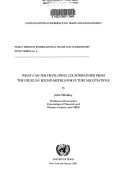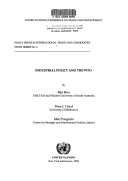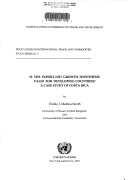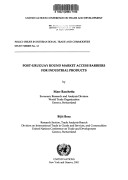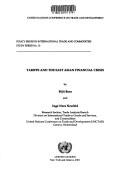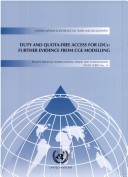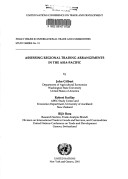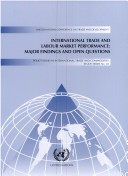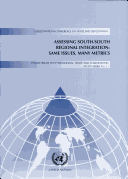Policy Issues in International Trade & Commodities Study S.
18 primary works • 19 total works
Book 1
Book 2
E-commerce, WTO and Developing Countries
by United Nations: Conference on Trade and Development
Book 3
Book 4
Book 5
Tariffs, Taxes and Electronic Commerce
by Susanne Telscher and United Nations: Conference on Trade and Development
Book 6
Industrial Policy and the WTO
by Bijit Bora, Peter J. Lloyd, Mari Pangestu, and United Nations: Conference on Trade and Development
Book 7
Book 9
Services Sector Reform and Development Strategies
by Christopher Findlay and United Nations: Conference on Trade and Development
Book 11
Book 12
Post-Uruguay Round Market Access Barriers for Industrial Products
by Marc Bacchetta and Bijit Bora
Book 13
Tariffs and the East Asian Financial Crisis
by Bijit Bora, Inge Nora Neufeld, and United Nations: Conference on Trade and Development
Book 14
Duty and Quota-free Access for LDCs
by Bijit Bora, Lucian Cernat, and Alessandro Turrini
Book 15
Assessing Regional Trading Arrangements in the Asia-Pacific
by John Gilbert, Robert Scollay, Bijit Bora, and United Nations: Conference on Trade and Development
Book 16
Assessing Regional Trade Arrangements
by Lucian Cernat and United Nations: Conference on Trade and Development
Book 18
Quantification of Non-tariff Measures
by Bijit Bora, Aki Kuwahara, Sam Laird, and United Nations: Conference on Trade and Development
Book 19
Book 20
International Trade and Labour Market Performance
by United Nations: Conference on Trade and Development
Book 21
Assessing South-south Regional Integration
by Lucian Cernat and United Nations: Conference on Trade and Development


